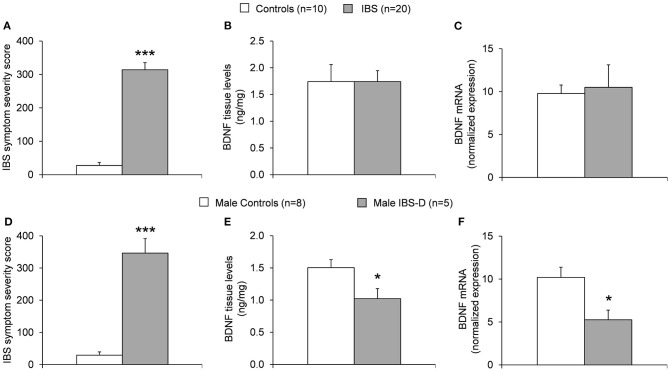Figure 2.
(A) IBS symptom severity in healthy controls vs. IBS patients. Significantly higher symptom severity scores are notable in the IBS population vs. controls (***p < 0.001). (B) Measurement of BDNF protein tissue levels obtained from colonic biopsies of the descending colon by nCounter analysis in healthy controls (n = 10, two female and eight male) and IBS patients (n = 20, 14 female and six male). No notable difference is detected in BDNF protein levels in healthy controls vs. IBS patients. (C) Measurement of BDNF mRNA levels obtained from colonic biopsies of the descending colon by ELISA in healthy controls (n = 10) and IBS patients (n = 20) with no notable difference detected. (D) IBS symptom severity in healthy male controls vs. male IBS-D patients. Significantly higher symptom severity scores are notable in the male IBS-D population vs. male controls (***p < 0.001). (E) Measurement of BDNF protein tissue levels obtained from colonic biopsies of the descending colon by nCounter analysis in healthy male controls (n = 8) and male IBS-D patients (n = 5). BDNF protein levels in male IBS-D patients were significantly lower compared to male healthy controls (*p < 0.05). (F) Measurement of BDNF mRNA levels obtained from colonic biopsies of the descending colon by ELISA in healthy male controls (n = 8) and male IBS-D patients (n = 5). BDNF mRNA levels in male IBS-D patients were significantly lower compared to male healthy controls (*p < 0.05).

